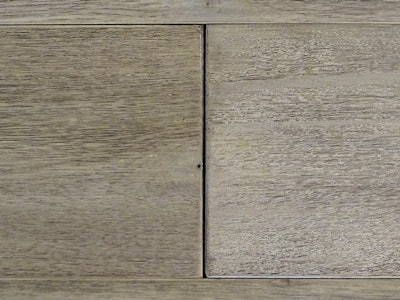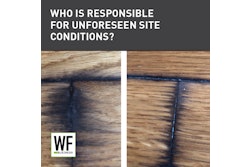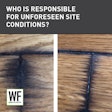
The Homeowner's Issue
After a year in their new home, homeowners noticed end gapping on multiple engineered flooring planks. The homeowner asked the flooring contractor to look at the floor again. The contractor visited the residence and recorded 30% RH. The contractor recommended using a humidifier to reduce the gapping. The homeowners were unsatisfied with the response and contacted an inspector.
Roy: The Inspector's Observations
The floor was identified as a 9/16-inch-thick, 5-inch-wide engineered-fillet, solid-core-construction hardwood floor mechanically fastened to a wood subfloor. The RH was at the bottom of the recommended range, and although there was end gapping, there was no side gapping. The mechanical fastening was inspected using rare earth magnets and was within the manufacturer's requirements. Destructive testing was performed to get a visual of the fastener penetration into the tongue and the fastener length, and both complied with manufacturer standards. Upon destructive testing it was noted there was no tongue-and-groove glue used on the end joints, which is a requirement in this manufacturer's installation instructions: "use quality tongue-and-groove glue on end joints on each plank for added strength." I concluded that, although the lack of glue wasn't the cause of the end-gapping (only a decrease in moisture content could create that), the installer did fail to comply with the manufacturer's requirement to glue the end-joints.
Blake: The Attorney's Analysis
Unfortunately, the installer failed to follow the manufacturer's guidelines and will be responsible for fixing the floor. However, perhaps the bigger point here is the importance of reviewing the manufacturer's guidelines before doing the work. After the problems in this case were discovered, the installer stated he had never used tongue-and-groove glue on end joints as part of a nail-down application. Indeed, I'm told that using tongue-and-groove glue on end joints in a nail-down installation is unusual. It is a good practice to download and save manufacturer instructions shortly before a job starts to maintain proof of them as of the date the work was performed. If this installer had taken a few minutes to confirm the installation specifications, he could have avoided a costly mistake

































